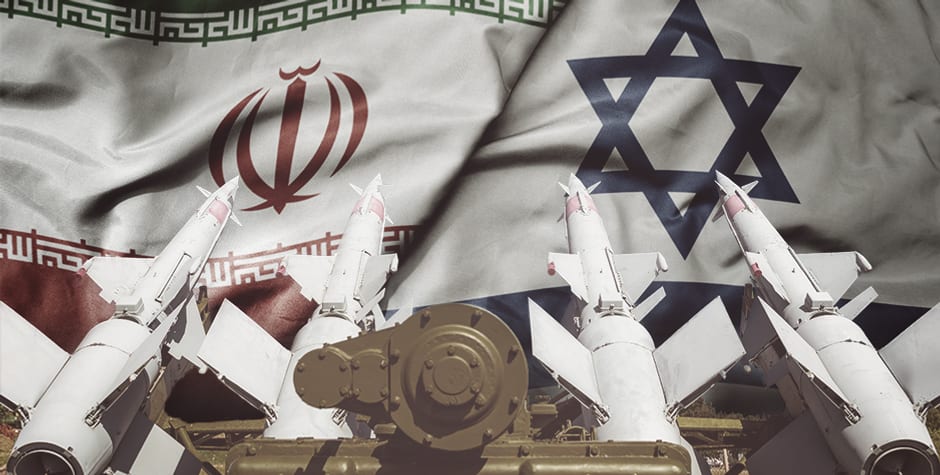Justified Defense: Why Israel’s June 13 Strike Against Iran Was Lawful Under International Law
Listen tothis article
On June 13, Israel launched an attack on Iran’s strategic military and nuclear sites. The operation followed decades of escalating threats from Iranian leaders calling for Israel’s destruction, as well as sustained indirect aggression through Iran-backed terrorist proxies, including Hezbollah and Hamas. Unfortunately, many in the international community are accusing Israel of “initiating” an unlawful armed attack against Iran without provocation. As discussed below, such accusations disregard critical facts and the law.
Assessing the legality of an armed conflict requires applying two separate legal frameworks: jus ad bellum, which addresses the lawfulness of initiating an armed conflict, and jus in bello, which governs the conduct of parties during an armed conflict, regardless of whether initiating hostilities was justified.
For the purpose of analyzing the launch of Israeli military action against Iran on June 13, we will focus solely on whether initiating the attack was justified.
Article 2(4) of the UN Charter prohibits Member States “from the threat or use of force against the territorial integrity or political independence of any state, or in any other manner inconsistent with the Purposes of the United Nations.” Violation of Article 2(4) triggers Article 51 of the Charter, which recognizes a state’s inherent right of self-defense.
Critically, a state is not required to wait until it is actually attacked for a response to be considered self-defense. As such, there are at least three approaches under which a state may preemptively act in self-defense.
First, under the doctrine of “interceptive self-defense,” a state may respond once an adversary has committed to an apparently irreversible course of aggression – crossing what one scholar calls the “legal Rubicon.”
Second, under the traditional approach, an armed response is also permitted when an armed attack is imminent (leaving no choice of means and no moment for deliberation), thus allowing for a preemptive strike. A threat is imminent if there is “a visible mobilization of armies, navies, and air forces preparing to attack. In other words, the enemy must be at the gates in a tangible sense.”
Third, under a more relaxed approach, “States may act when the ‘last window of opportunity’ to defend itself is about to close . . . [which] can only present itself when the other side has decided to attack, and a failure to act might forfeit the chance to mount an effective defense.”
Scholars of international law and the international community generally view these three approaches in a very narrow and restricted way. They claim that the Israeli attack was not justified because no Iranian attack was “imminent.” This approach disregards critical context – namely, decades of indirect attacks that Iran has carried out against Israel through its terrorist proxies, repeated public vows by Iranian leadership to destroy Israel, its pursuit to develop nuclear weapons, and its refusal to reach any agreement on uranium enrichment.
Note that Article 2(4) does not say that state A has to directly attack state B in order for state B to justifiably act in self-defense. The fact that Iran had been attacking Israel through Hezbollah amounts to an “armed attack” or “use of force” against Israel and, thus, already justifies Israel’s actions. As such, June 13 is not the correct date to determine the legality of Israeli actions. Additionally, even under the preemptive self-defense approaches mentioned above, indirect attacks coupled with vows of future attacks sufficiently show that the Iranian leadership had embarked upon an irreversible, aggressive, and unlawful course of action. Those attacks and the vows to commit future aggression make it sufficiently legitimate for Israel to act in self-defense.
In August 2022, Esmail Ghaani, the commander of Iran’s Quds Force, declared, “Hezbollah’s sons are making plans to bring down the last blow against the Zionist regime . . . and to realize the wish of Imam Khomeini to eradicate Israel from the map and the face of the Earth.” Similarly, in September 2019, Major General Hossein Salami said: “This sinister regime must be wiped off the map and this is no longer . . . a dream (but) it is an achievable goal.”
These public statements were not merely empty words – Iran backed its words with action. The evidence is extensive. In the weeks leading up to the October 7 attack, the Iranian military gave specialized combat training to Hamas operatives. Intelligence reports also indicate that Hamas delayed the October 7 attack by 13 months in order to enlist Iran’s support. And then during the October 7 attack, Hamas used Iranian weapons. And foundationally, Hezbollah was formed with Iranian support in the early 1980s as a guerrilla force to fight against Israel and they provide an estimated $700 million annually to Hezbollah, funding a “spectrum of activities, from military operations against Israel to maintaining a vast network of social services in Lebanon.” This sustained support has empowered Hezbollah to carry out repeated attacks against Israel, including launching rockets into Israel in October 2023 in support of Hamas. Consider, from October 8, 2023, to November 26, 2024, Hezbollah launched 2,454 strikes into Israel.
With this information publicly available, it is erroneous to claim that Israel’s actions are not justified under international law. Only evaluating Israel’s actions on June 13 – while ignoring Iran’s prior indirect attacks and public threats against Israel, both of which are a clear indication of future intent – and concluding Israel unlawfully attacked Iran without provocation misrepresents both the facts and the law.
